~1,800 infantry10 batteries of artillery (fired 19,213 rounds)272 US Air Force missions (dropped 890 tons of bombs and 115 tons of napalm) 2 battalions, ~800 | Dates 10 May 1969 – 20 May 1969 | |
US 72 killed372 woundedARVN unknownSeveral helicopters shot down or damaged US claim 630 killed3 captured Result U.S./South Vietnamese tactical victory and withdrawal Combatants Similar | ||
The Battle of Hamburger Hill was a battle of the Vietnam War that was fought by the United States and South Vietnam against North Vietnamese forces from May 10–20, 1969 (main part of Operation Apache Snow). Although the heavily fortified Hill 937 was of little strategic value, U.S. command ordered its capture by a frontal assault, only to abandon it soon thereafter. The action caused a controversy both in the American military and public.
Contents
- Terrain
- Order of battle
- Planning
- Reinforcing the assault on Hill 937
- Tactical difficulties
- Hamburger Hill
- Final assault
- ARVN participation
- Aftermath
- In popular culture
- References
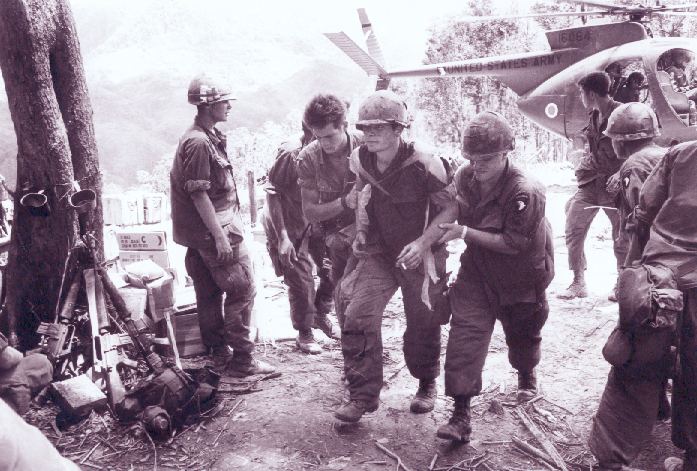
The battle was primarily an infantry engagement, with the U.S. Airborne troops moving up the steeply-sloped hill against well entrenched troops. Attacks were repeatedly repelled by the North Vietnamese People's Army of Vietnam (PAVN) defenses. Bad weather also hindered operations. Nevertheless, the Airborne troops took the hill through direct assault, causing extensive casualties to the NVA forces.
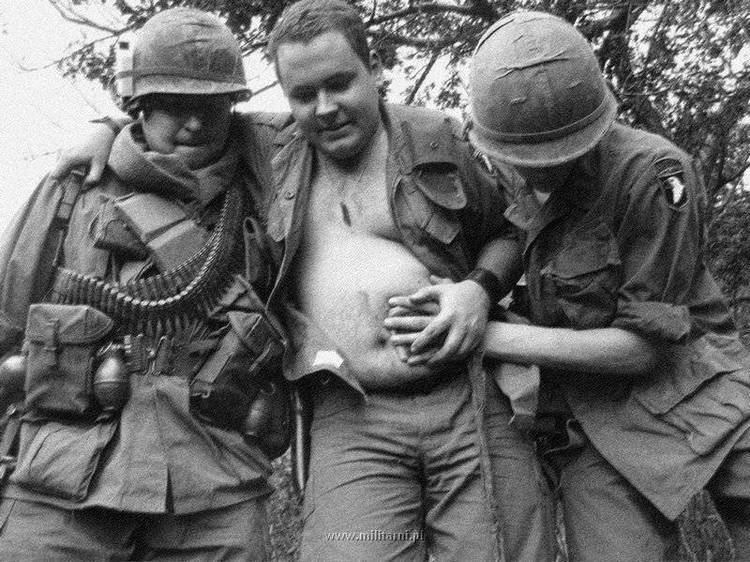
Terrain
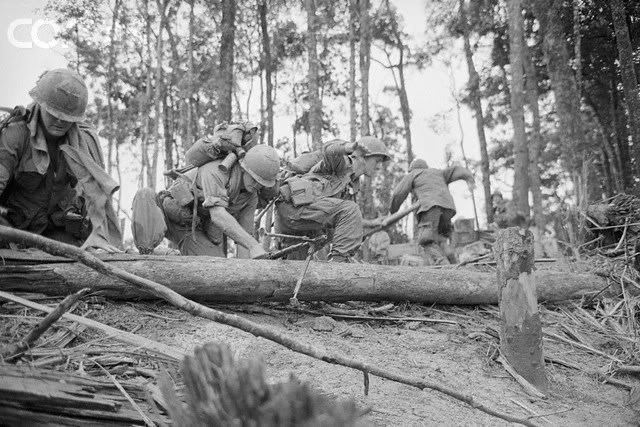
The battle took place on Dong Ap Bia (Ap Bia Mountain, Vietnamese: Đồi A Bia) in the rugged, jungle-shrouded mountains of South Vietnam, 1.2 miles (1.9 km) from the Laotian border. Rising from the floor of the western A Shau Valley, Ap Bia Mountain is a solitary massif, unconnected to the ridges of the surrounding Annamite range. It dominates the northern valley, towering some 937 meters (3,074 ft) above sea level. Snaking down from its highest peak are a series of ridges and fingers, one of the largest extending southeast to a height of 900 meters (3,000 ft), another reaching south to a 916-meter (3,005 ft) peak. The entire mountain is a rugged wilderness blanketed in double- and triple-canopy jungle, dense thickets of bamboo, and waist-high elephant grass that in some cases was taller than an M113 Armored Personnel Carrier. Local Degar tribesmen called Ap Bia "the mountain of the crouching beast". Official histories of the engagement refer to it as Hill 937 after the elevation displayed on U.S. Army maps, but the American soldiers who fought there dubbed it "Hamburger Hill", suggesting that those who fought on the hill were "chewed up like a hamburger" in grim reference to the Battle of Pork Chop Hill during the Korean War.
Order of battle
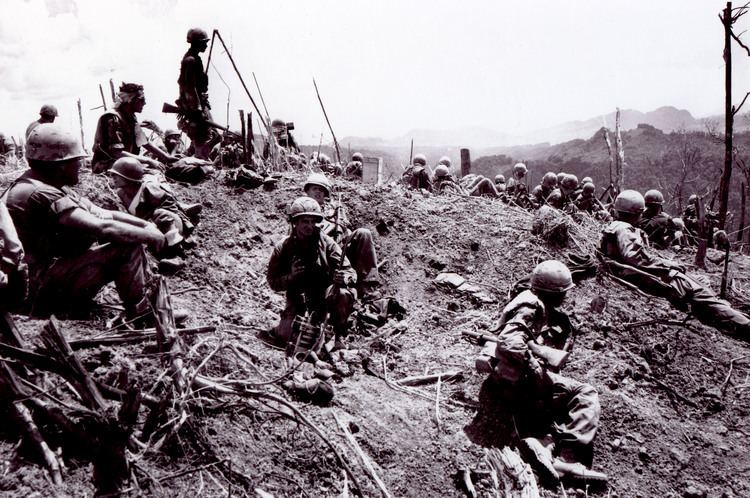
The battle on Hamburger Hill occurred in May 1969, during Operation Apache Snow, the second part of a three-phased campaign intended to destroy North Vietnam Army (NVA) Base Areas in the remote A Shau Valley. This campaign was a series of operations intended to neutralize the A Shau, which had been an infiltration route into South Vietnam prior to 1966, when the North Vietnamese seized the Special Forces camp in the valley during the Battle of A Shau and established a permanent presence. Subsequent U.S. efforts to clear the valley had been consistently unsuccessful. Lieutenant General Richard G. Stilwell, commander of XXIV Corps, amassed the equivalent of two divisions, and substantial artillery and air support, to accomplish the task. The North Vietnamese had moved their 6th, 9th, and 29th Regiments into the area to recover from losses sustained during a previous U.S. Marine operation (Operation Dewey Canyon) in February.
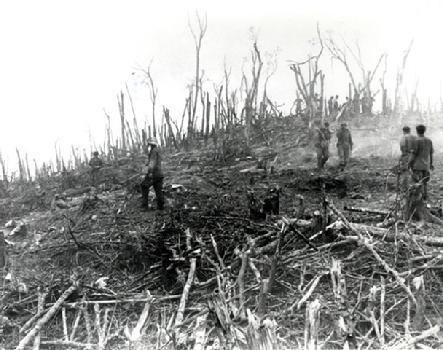
Assigned to Apache Snow were three airborne infantry battalions of the 101st Airborne Division, commanded by Major General Melvin Zais. These units of the division's 3rd Brigade (commanded by Colonel Joseph Conmy) were the 3rd Battalion, 187th Infantry Regiment (Lt. Col. Weldon Honeycutt); 2nd Battalion, 501st Parachute Infantry Regiment (Lt. Col. Robert German); and the 1st Battalion, 506th Parachute Infantry Regiment (Lt. Col. John Bowers). Two battalions of the Army of the Republic of Vietnam's (ARVN) 1st Division (the 2/1st and 4/1st) had been temporarily assigned to the 3rd Brigade in support. Other major units participating in Apache Snow included the 9th Marine Regiment; and 3rd Squadron, 5th Cavalry Regiment and the 3rd ARVN Regiment.
Planning
Colonel Conmy characterized the operation as a reconnaissance in force. His plan called for the five battalions to "combat assault" into the valley by helicopter on May 10, 1969, and to search their assigned sectors for PAVN troops and supplies. The overall plan of attack called for the Marines and the 3/5th Cavalry to reconnaissance in force toward the Laotian border while the ARVN units cut the highway through the base of the valley. The 501st and the 506th were to destroy the enemy in their own operating areas and block escape routes into Laos. If a battalion made heavy contact with the North Vietnamese, Conmy would reinforce it by helicopter with one of the other units. In theory, the 101st could reposition its forces quickly enough to keep the PAVN from massing against any one unit, while a U.S. battalion discovering a North Vietnamese unit would fix it in place until a reinforcing battalion could lift in to cut off its retreat and destroy it.
The U.S. and ARVN units participating in Apache Snow knew, based on existing intelligence information and previous experience in the A Shau, that the operation was likely to encounter serious resistance from PAVN. Beyond that, however, they had little intelligence as to the actual strength and dispositions of PAVN units. Masters of camouflage, the North Vietnamese completely concealed their bases from aerial surveillance. When PAVN forces moved, they did so at night along trails under triple-canopy jungle. They effected their command and control mainly by runner and wire, leaving no electronic signature to monitor or trace. U.S. battalion commanders had to generate their own tactical intelligence by combat patrols, capturing equipment, installations, documents, and occasionally prisoners of war to provide the raw data from which to draw their assessment of the North Vietnamese order of battle and dispositions. It was this time-consuming and hit-or-miss task force which characterized the main efforts of Colonel Honeycutt's 3/187th Infantry during the first four days of the operation.
Initially, the operation went routinely for the 101st Airborne Division. Its units experienced only light contact on the first day, but documents captured by 3/187th indicated that the 29th PAVN Regiment, nicknamed the "Pride of Ho Chi Minh" and a veteran of the 1968 Tet Offensive assault on Hue, was somewhere in the valley. Past experience in many of the larger encounters with PAVN indicated the North Vietnamese would resist violently for a short time and then withdraw before the Americans brought overwhelming firepower to bear against them. Prolonged combat, such as at Dak To and Ia Drang, had been relatively rare. Honeycutt anticipated his battalion had sufficient capability to carry out a reconnaissance on Hill 937 without further reinforcement, although he did request that the brigade reserve, his own Bravo Company, be released to his control.
Honeycutt was a protégé of General William C. Westmoreland, the former commander of U.S. forces in Vietnam. He had been assigned command of the 3/187th in January and had by replacement of many of its officers given it a personality to match his own aggressiveness. His stated intention was to locate the PAVN force in his area of responsibility and engage it before it could escape into Laos.
Reinforcing the assault on Hill 937
They had made no significant contacts in its area of operations, and at midday on May 13, the brigade commander, Colonel Conmy, decided it would move to cut off North Vietnamese reinforcement from Laos and to assist Honeycutt by attacking Hill 937 from the south. Its Bravo company was heli-lifted to Hill 916, but the remainder of the battalion made the movement on foot, from an area 4 kilometers (2.5 mi) from Hill 937, and both Conmy and Honeycutt expected the 1/506th to be ready to provide support no later than the morning of May 15. Although Bravo Company seized Hill 916 on May 15, it was not until May 19 that the battalion as a whole was in position to conduct a final assault, primarily because of nearly impenetrable jungle.
The 3/187 conducted multi-company assaults on May 14 and May 15, incurring heavy casualties, while the 1/506th, led by 1st. Lt. Roger Leasure, made probing attacks on the south slopes of the mountain on May 16 and May 17. The difficult terrain and well organized North Vietnamese forces continually disrupted the tempo of U.S. tactical operations on Hills 916, 900, and 937. Steep gradients and dense vegetation provided few natural landing zones (LZs) in the vicinity of the mountain and made helicopter redeployments impractical. The terrain also masked the positions of the NVA 29th Regiment, making it nearly impossible to suppress anti-aircraft fire, while the jungle covered the movement of North Vietnamese units so completely that it created a nonlinear battlefield. NVA soldiers, able to maneuver freely around the LZs, shot down or damaged numerous helicopters with small arms fire, rocket-propelled grenades, and crew-served weapons. The North Vietnamese also assaulted nearby logistical support LZs and command posts at least four times, forcing deployment of units for security that might otherwise have been employed in assaults. Attacking companies had to provide for 360-degree security as they maneuvered, since the terrain largely prevented them from mutually supporting one another. NVA platoon- and company-sized elements repeatedly struck maneuvering U.S. forces from the flanks and rear. Sgt Frank Blandori and his platoon held the south side as the VC and NVA charged this position several times but the men of the 3/187 held the line.
Tactical difficulties
The effectiveness of U.S. maneuver forces was limited by narrow trails that funneled attacking companies into squad or platoon points of attack, where they encountered PAVN platoons and companies with prepared fields of fire. With most small arms engagements thus conducted at close range, U.S. fire support was also severely restricted. Units frequently pulled back and called in artillery fire, close air support, and aerial rocket artillery, but the North Vietnamese bunkers were well-sited and constructed with overhead cover to withstand bombardment. During the course of the battle the foliage was eventually stripped away and the bunkers exposed, but they were so numerous and well constructed that many could not be destroyed by indirect fire. Napalm, recoilless rifle fire, and dogged squad and platoon-level actions eventually accounted for the reduction of most fortifications, though at a pace and price thoroughly unanticipated by American forces.
U.S. battle command of small units was essentially decentralized. Though Honeycutt constantly prodded his company commanders to push on, he could do little to coordinate mutual support until the final assaults, when the companies maneuvered in close proximity over the barren mountain top. Fire support for units in contact was also decentralized. Supporting fires, including those controlled by airborne forward air controllers, were often directed at the platoon level. Eventually human error led to five attacks by supporting aircraft on the 3/187th, killing seven and wounding 53. Four of the incidents involved Cobra gunship helicopters, which in one case were more than 1 kilometer (0.62 mi) away from their intended target.
Hamburger Hill
On May 16, Associated Press correspondent Jay Sharbutt learned of the ongoing battle on Hill 937, traveled to the area and interviewed Zais, in particular asking why infantry, rather than firepower, was used as the primary offensive tool on Hill 937. More reporters followed to cover the battle, and the term "Hamburger Hill" became widely used. The U.S. brigade commander ordered a coordinated two-battalion assault for May 18, 1/506th attacking from the south and 3/187th attacking from the north, trying to keep the 29th NVA Regiment from concentrating on either battalion. Fighting to within 75 meters (246 ft) of the summit, Delta Company 3/187th nearly carried the hill but experienced severe casualties, including all of its officers. The battle was one of close combat, with the two sides exchanging small arms and grenade fire within 20 meters (66 ft) of one another. From a light observation helicopter, the battalion commander attempted to coordinate the movements of the other companies into a final assault, but an exceptionally intense thunderstorm reduced visibility to zero and ended the fighting. Unable to advance, 3/187 again withdrew down the mountain. The three converging companies of 1/506th struggled to take Hill 900, the southern crest of the mountain, encountering heavy opposition for the first time in the battle. Because of the heavy casualties already sustained by his units and under pressure from the unwanted attention of the press, Zais seriously considered discontinuing the attack but decided otherwise. Both the corps commander and the MACV commander, General Creighton W. Abrams, publicly supported the decision. Zais decided to commit three fresh battalions to the battle and to have one of them relieve the 3/187th in place. The 3/187th's losses had been severe, with approximately 320 killed or wounded, including more than sixty percent of the 450 experienced troops who had assaulted into the valley. Two of its four company commanders and eight of twelve platoon leaders had become casualties. The battalion commander of the 2/506th, Lt. Col. Gene Sherron, arrived at Honeycutt's CP on the afternoon of May 18 to coordinate the relief. 3/187th was flying out its latest casualties, and its commander had not yet been informed of the relief. Before any arrangements were made, Zais landed and was confronted by Honeycutt, who argued that his battalion was still combat effective. After a sharp confrontation, Zais relented, although he assigned one of Sherron's companies to Honeycutt as reinforcement for the assault.
Final assault
Two fresh battalions—the 2/501st Infantry and ARVN 2/3d Infantry—were airlifted into LZs northeast and southeast of the base of the mountain on May 19. Both battalions immediately moved onto the mountain to positions from which they would attack the following morning. Meanwhile, the 1/506 for the third consecutive day struggled to secure Hill 900.
The 3rd Brigade launched its four-battalion attack at 10:00 on May 20, including two companies of the 3/187 reinforced by Alpha Company 1/506. The attack was preceded by two hours of close air support and ninety minutes of artillery prep fires. The battalions attacked simultaneously, and by 12:00 elements of the 3/187 reached the crest, beginning a reduction of bunkers that continued through most of the afternoon. Some PAVN units were able to withdraw into Laos, and Hill 937 was secured by 17:00.
ARVN participation
The 2nd Battalion, 3rd Regiment of the ARVN 1st Division participated in the battle. Recent research, particularly based on the statements by General Creighton W. Abrams in "The Abrams Tapes", says its role in the final assault was as follows: The unit was positioned on a stretch of the NVA defense line that was lightly defended, and sent a scout party to test the forward enemy lines earlier than the proposed assault time; this party was quickly able to discern the minimal enemy strength. The 2/3 ARVN commanding officer decided to exploit the situation, and attack in advance of the other units. The 2/3 ARVN reached the crest of Hamburger Hill around 10:00, ahead of the 3/187th, but was ordered to withdraw from the summit, allied artillery was to be directed on to the top of the hill. The opportunity to threaten the NVA lines facing the 3/187th was lost. Shortly after the 2/3 ARVN completed their withdrawal, the 3/187th was able to break through the NVA defenses and occupy the summit.
Aftermath
Major General John M. Wright quietly abandoned the hill on June 5. The debate over Hamburger Hill reached the United States Congress, with particularly severe criticism of military leadership by Senators Edward Kennedy, George McGovern, and Stephen M. Young. In its June 27 issue, Life Magazine published the photographs of 241 Americans killed in one week in Vietnam; this is now considered a watershed event of negative public opinion toward the Vietnam War. While only five of the 241 featured photos were of those killed in the battle, many Americans had the perception that all of the photos featured in the magazine were casualties of the battle.
The controversy of the conduct of the Battle of Hamburger Hill led to a reappraisal of U.S. strategy in South Vietnam. As a direct result, to hold down casualties, General Abrams discontinued a policy of "maximum pressure" against the North Vietnamese to one of "protective reaction" for troops threatened with combat action, while simultaneously President Richard Nixon announced the first troop withdrawal from South Vietnam.
U.S. losses during the ten-day battle totaled 72 KIA and 372 WIA. To take the position, the 101st Airborne Division eventually committed five infantry battalions and ten batteries of artillery. In addition, the U.S. Air Force flew 272 missions and expended more than 500 tons of ordnance.
U.S. estimates of the losses incurred by the 7th and 8th Battalions of the 29th NVA Regiment included 630 dead (discovered on and around the battlefield); including many found in makeshift mortuaries within the tunnel complex. Yet no one could count the NVA running off the mountain, those killed by artillery and air strikes, the wounded and dead carried into Laos or the dead buried in collapsed bunkers and tunnels. During the ten-day battle, U.S. forces captured 89 individual weapons and 22 crew‑served weapons.
In popular culture
John Irvin's 1987 film, Hamburger Hill, is a fictionalized account of the battle (while the film's plot is based on real events, it features fictional characters).
The American documentary television miniseries, Vietnam in HD (which aired on the History Channel), features The Battle of Hamburger Hill. In particular, the Battle of Hamburger Hill is related by featured veterans Karl Marlantes and Arthur Wiknik.
The videogame Battlefield Bad Company 2: Vietnam features a multiplayer map named Hill 137 (rather than 937), which includes heavily fortified positions similar to those seen on Hill 937. Additionally, if the US side loses a round, a newsreel-style voice-over states that the US Army nicknamed the hill "Hamburger Hill".
The videogame Rising Storm 2: Vietnam features a multiplayer map named Hill 937 based on the Battle of Hambuger Hill.
The television series Tour of Duty had an episode titled The Hill in which the characters are ordered to take Hill 1000 only to abandon it after each costly victory.
The battle is also referenced by the American rapper Eminem, in his song Amityville, off his third album The Marshall Mathers LP.
